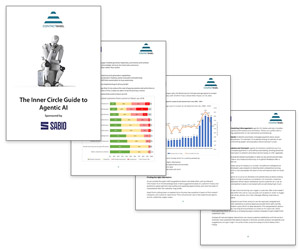Here is a list of ten best practices to consider when approaching any workforce management (WFM) related task.
10 Fundamental Workforce Management Best Practices
Here are ten key best practices that you need to know before embarking on a WFM-related task in the contact centre.
1. Keep fighting knowledge erosion – knowledge erosion is perhaps the biggest threat to longer-term WFM success – it’s important to build regular ongoing training into your WFM support contract, with a particular focus on best practice and refresher modules that can help ensure skills remain current.
2. Concentrate on processes and methodology – workforce management is a business process not a technology solution, you need to apply as much focus to your internal processes and methodologies as you do to your software features.
3. Don’t take WFM for granted – ensure that you’re always monitoring data accuracy from your various sources at regular intervals, and make sure you incorporate it into your calibration process – WFM works best as an ongoing refinement process.
4. Remember to measure and publicise your WFM performance – it’s crucial that your WFM team becomes a focal point in your organisation and stays central to any core planning decisions being made. WFM provides a benchmark, and results are a great way of sharing success and challenges with the wider organisation.
5. Monitor your shrinkage – you need to look at shrinkage historically, and then make sure that you’re balancing this shrinkage correctly into your forecasts – planning to the actuals, and then managing to targets.
6. Understand your adherence and set realistic targets – introduce a real-time adherence approach – if applied correctly this can have a major impact on staffing efficiencies, with a significant return on the investment and resources applied.
7. Look beyond the inbound contact centre – start identifying ways to deploy workforce management outside of the traditional front-office in key areas such as outbound and the back-office.
8. 100% forecast accuracy is an unrealistic dream for most of us – make sure, however, that you perform within a consistent acceptable tolerance at an intra-day level.
9. Realise the benefits of automation – don’t ignore the potential of automated holiday and shift swap requests: these features are highly valued by agents and free up significant amounts of administration time that can be deployed more productively.
10. Don’t overlook your long-term forecasts – getting day-to-day scheduling right can take up a lot of focus, but don’t forget your long-term planning: you should then cascade these goals into your medium and shorter-term forecasts and plans to make the process more effective.
Adding additional insight to these best practices, Mike Andrews, VP Commercial Strategy at Sabio, says:“We’re seeing solutions such as WFM playing a key role as the first stage of broader employee optimisation and customer management initiatives.”
“We’re also finding that organisations are increasingly looking to use some of the savings released by effective WFM projects to fund added-value customer management investment.”
Many of the projects that Mike refers to include the adoption of WFM systems.
Below, we share ten more best practices, but this time we share our advice for getting the most value from your WFM tools.
10 Best Practices to Get More From Your WFM System
Workforce management solutions that include flexible self‐service modules and can consistently apply work rules help reduce agent attrition by empowering agents to manage their own schedules, while treating all staff consistently.
Here are a few best practices to help contact centre managers reduce agent attrition:
1. Treat all agents fairly and consistently; do not give preferential treatment for schedule changes.
2. Embed agent work and schedule rules into the WFM solution and let the application apply these rules on a consistent basis.
3. Communicate the work rules to all staff members so that they know what to expect. If possible, have agents agree to the work rules as a condition of employment.
4. Use a WFM self‐service module that agents can access from their desktop.
5. Invite agents to input their own schedule requests directly into the system.
6. Encourage agents to swap their shifts or specific hours (if this is allowed) on their own, without management oversight. However, provide management assistance for agents who are not comfortable with the self-service solution.
7. Invite agents to enter their vacation requests directly into the WFM system.
8. Notify agents of schedule changes as early as possible, in order to enable them to alter their personal schedules to accommodate the organisation’s needs.
9. Use the WFM solution to schedule weekly or monthly team meetings or coaching sessions.
10. Give agents as much choice as possible; if you cannot accommodate a shift change, allow them to select the channels that they’d like to support.

Mike Andrews
Reflecting on these new best practices, Mike Andrews says: “WFM is more than just a software tool – it’s a whole business process solution.”
“So, whether they’re swapping out an old system or implementing workforce management for the first time, it’s essential that firms think carefully about the supporting business processes and methodologies that underpin a successful WFM install – before, during and after go-live.”
“That’s why it’s so important for organisations to do everything they can to support the success of their WFM projects, particularly as the results – when done right – can be so compelling.”
For more best practices regarding contact centre WFM, read our articles:
- 50 Expert Tips to Improve Contact Centre WFM
- 50 MORE Expert Tips to Improve Contact Centre WFM
- 61 Top Tips for Workforce Management Technology
Author: Jonty Pearce
Published On: 24th Apr 2010 - Last modified: 13th Aug 2025
Read more about - Workforce Planning, Attrition, Sabio, Shrinkage, Workforce Management (WFM), Workforce Planning



















